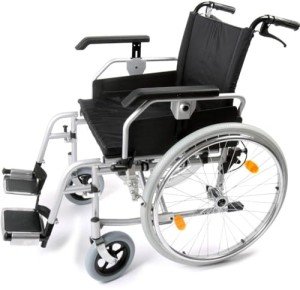Bariatric Wheelchair 24 Inch Seat wheelchair bariatric transit 24 inch Seat Width
Seat Width
Having the appropriate seat width is necessary to wheelchair users who spend longer periods in their chairs. Too narrow a seat will cause pressure on the hips and thighs which might lead to sores or pressure points. Having too wide a seat can likewise make it challenging for the user to reach the hand rims to propel themselves or maneuver in little spaces.
To measure the proper seat width a person would sit on a chair normally and have their measurement taken throughout their lap at the largest point which is typically their hips. A wheelchair measuring tape can be utilized to determine this, but a yard stick is preferred as it avoids people from wrapping the tape around their hips which would give an unreliable outcome.
The basic wheelchair seat width is 16" (narrow adult), 18" (standard grownup), and 20" (wide grownup). For lightweight bariatric transport wheelchair clients, a 24" seat is readily available. This heavy-duty additional large bariatric wheel chair wheelchair from Medline includes swing-away footrests, a carbon steel frame with rust- and chip-resistant chrome plating, and easy-to-clean vinyl upholstery. It has a weight capacity of 500 pounds.
Seat Depth
Generally, the seat depth of a bariatric wheelchairs uk wheelchair was included 2" to the measurement taken at the user's best point (typically their hips). This was implied to accommodate extra layers of clothing that might be worn during winter. Nevertheless, this practice is becoming less common as wheelchair users are able to invest more time inside your home and are not using long coats. This makes the seat depth of a chair lesser when choosing a bariatric wheelchair. Nevertheless, it is still crucial to pick an option that uses sufficient assistance for larger users.
 The Medline folding extra wide bariatric wheelchair for sale manual wheelchair features a comfy 24" seat width and a durable slide tube silver vein frame. It likewise has an adjustable axle and tool-free elevating legrests.
The Medline folding extra wide bariatric wheelchair for sale manual wheelchair features a comfy 24" seat width and a durable slide tube silver vein frame. It likewise has an adjustable axle and tool-free elevating legrests.
Seat Height
 When it concerns figuring out the right wheelchair seat width you need to constantly measure from the user's largest point which is typically their hips. You will likewise require to consider whether the user is going to be using a winter season coat as this might add 2" to the width required.
When it concerns figuring out the right wheelchair seat width you need to constantly measure from the user's largest point which is typically their hips. You will likewise require to consider whether the user is going to be using a winter season coat as this might add 2" to the width required.
When a wheelchair is in usage it should only be run on level surfaces with the wheel locks completely engaged. This is to avoid the chair from having the ability to move slopes that are 10 degrees or higher. It is also essential to keep in mind that any activity that may shift the center of mass in the chair ought to be finished with care. This includes grabbing items that need the person to lean out of their seat or attempting to stand up from it.
Whenever you have the chair in use it is suggested that you frequently examine it for damage and lube any locations that are considered essential. For instance, the casters must be oiled by removing the caster fork and using a multi-purpose grease to apply to the caster stem bearings. Similarly, the foot plates can be changed by loosening the bolt and after that moving them to the desired position. This enables the feet to sit conveniently on the footplate and avoids any pressure points from forming. This can be really uneasy for the user and if left unattended, can result in pressure sores.
Weight Capacity
Bariatric wheelchairs are developed to support more weight than basic wheelchairs. This makes them tougher and much better geared up to manage falls. They are also normally larger and broader, making them less maneuverable in tight spaces than basic wheelchairs. They need automobiles with unique ramps and lifts to load them, as well as drivers who know how to best transport them from one area to the next.
When selecting a wheelchair, consider its weight capacity as it will be the main determining factor in whether it will accommodate your traveler's needs. The weight capacity of the chair is frequently listed as a static load, indicating that it shows the amount of weight the chair can comfortably hold while standing still. However, some makers likewise list an active load that is based on a drop test and can mimic the impact of somebody taking a seat in the chair. This might be a more dependable measurement of the weight limit, depending on your needs.
If you plan to carry out activities that shift your center of gravity in the seat (such as reaching for things), make certain to have front casters pointed in a forward instructions and wheel locks engaged so the chair will not tip over. Also, check that casters are oiled frequently to avoid extreme wear and abrasions. The lubrication treatment includes getting rid of the fork, separating the caster from the wheel, and greasing the caster stem bearings with top quality multi-purpose grease.




